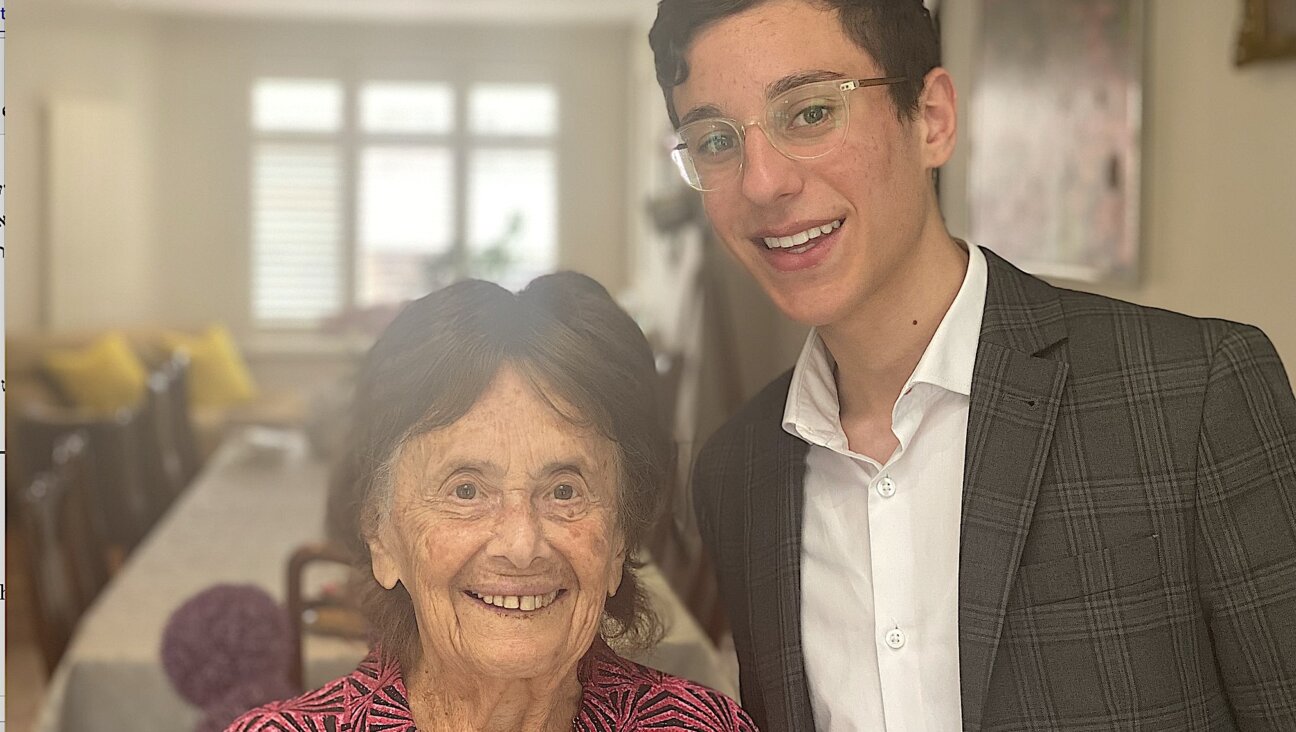Lee Harvey Oswald? ‘I Was A Better Shot Than Him.’

Image by Anya Ulinich
Lee Harvey Oswald is known as the crack marksman who killed President Kennedy from 88 yards away 54 years ago on Wednesday, but Aron Vigushin, who went shooting with Oswald years before that, was surprised to hear of his friend’s involvement.
Vigushin was a 23-year-old Jewish resident of Minsk when he was introduced to Oswald, who had just moved to town in 1959. Oswald, then 20, had defected in late 1959 from the United States to the Soviet Union, where he was sent to Minsk, now the capital city of Belarus, to work at an electronics factory.
Oswald fell in with Vigushin and his friends, and would sometimes tag along to the dance club or the movies. On a few occasions, Oswald joined in when Vigushin booked time at a shooting range.
“We shot, and you can believe or not, I was better than him,” Vigushin said.

Aron Vigushin in the early 1960s. Image by Courtsey of Aron Vigushin
Oswald was a Marxist; historians believe he moved to the USSR out of a mix of ideological conviction and a desire to flee an unhappy family and social life in the United States. He was sent to Minsk because the KGB wanted to keep American defectors far away from important goings-on in Moscow. The KGB closely monitored Oswald, and a factory worker named Stanislav Shushkevich — who went on to become the first president of independent Belarus — was assigned to tutor Oswald in Russian.
Oswald was later assassinated himself, while Vigushin now lives in Dallas, the site of Oswald’s crime, after leaving the Soviet Union during the wave of Jewish emigration in the 1980s. After he told his story during a program at the local Jewish community center, the facility’s Center for Jewish Education suggested he bring his story to the Forward.
Vigushin knew Oswald as “Alek.” (Oswald was carrying a fake Selective Service card in the name of “Alek James Hidell” when he was arrested.) They hung out one-on-one a few times, including once at Vigushin’s mother’s apartment.
Oswald “didn’t talk too much,” Vigushin told the Forward. “He was a shy man…. The questions he asked were related to music, astronomy, Russian language. But he didn’t talk too much about himself…. He never talked politics.”
“He said that he was an orphan,” Vigushin recounted. (In fact, Oswald’s mother was still alive.) “My mom was also an orphan and she became a little bit attached to him.”
For a time, Oswald seriously dated a Jewish woman named Ella German. But after his proposal was rejected in early 1961, he started seeing his future wife, Marina Prusakova, marrying her in April after only six weeks of dating.
Over time, Vigushin said, Oswald became disillusioned with Soviet life: “He started to figure out that this was not the kind of place he wanted to live.” He left in June 1962 without saying goodbye.
Vigushin said it was several months after the assassination before he learned from a friend that Oswald was involved. The Soviet Union censored news of Oswald’s involvement in the killing because his Soviet past was potentially embarrassing.
When Vigushin was told what “Alek” had done, his response was: “Can that be? He doesn’t look like an aggressive person.”
Vigushin’s life went on after that strange episode, of course. But living in the Soviet Union was increasingly difficult for him and his family, especially given the deep-seated anti-Semitism.
“There were a lot of restrictions,” Vigushin said. His wife was not accepted to medical school despite having good grades, and whenever he wanted to hire a Jewish employee, “My director told me, ‘Again a Jew? You have enough Jewish people.’ It looks like he had some quota.”
Vigushin and his family left in August 1980 — though his father died in Rome, where the family was forced to wait for a few months until their visas to America were approved.

Aron Vigushin Image by Meyer Denn
Finally the family was told they would be allowed in — but there was a catch.
“They said, ‘You will go to El Paso, Texas.” I never heard of this city,” he said. “After the interview, we went to a library in Rome and I took a map and looked — it’s on the border of Mexico. And then we asked people, ‘What is El Paso?’ And they said it was a dangerous city. Pancho Villa” — the Mexican revolutionary who died in 1923 — “is in El Paso. And we became afraid of Pancho Villa.”
But the Vigushin family eventually adjusted to Texas life. Aron Vigushin was teaching at El Paso Community College on the 30th anniversary of the Kennedy assassination in 1993 when people were reminiscing about that infamous day.
Vigushin’s infamous connection “slipped from my tongue,” he said. A few days later, the son of one of his colleagues, who worked at the local newspaper, interviewed him about his story. He has since been interviewed by The Sixth Floor Museum, the museum of the assassination in Dallas, where he moved in 2000.
Though Vigushin once tried and failed to get in contact with Marina Oswald, who still lives in the Dallas area, he mostly considers his historical connection just a quirk of fate.
“Sometimes,” he said, “life has such a coincidence that you never believe it can happen.”
Contact Aiden Pink at [email protected] or on Twitter, @aidenpink






















